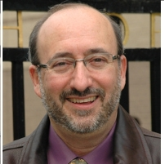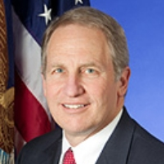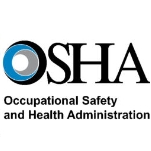Under the administration of President George W. Bush, OSHA has become even less of a safety watchdog. President Bush’s appointees at OSHA have turned the agency into a largely voluntary-oriented program. The administration’s anti-regulatory philosophy has translated into a smaller staff at OSHA to develop new standards, less reliance on the views of organized labor and an enlarged role for businesses.
- Firing or laying off
- Blacklisting
- Demoting
- Denying overtime or promotion
- Disciplining
- Denial of benefits
- Failure to hire or rehire
- Intimidation
- Reassignment affecting prospects for promotion
- Reducing pay or hours
The
Susan Harwood Training Grant Program
awards
grants to nonprofit organizations on a competitive basis to provide training and education programs for employers and employees.
In National Emergencies, OSHA to Provide Assistance, Not Enforcement
(by James Nash, Occupational Hazards)
- Table of Contents
- Overview
- History
- What it Does
- Where Does the Money Go
- Controversies
- Suggested Reforms
- Comments
- Leave a comment

The deaths of eleven workers in the explosion of BP’s Gulf of Mexico oil platform Deepwater Horizon, has highlighted the importance of worker safety on the job. The Occupational Safety and Health Administration (OSHA), the federal agency responsible for protecting the safety and health of American workers, has been headed since December 9, 2009, by a public health expert, Dr. David Michaels, PhD, who has devoted his career to issues of public and occupational health. Michaels has already testified before Congress about OSHA’s role in protecting the more than 33,000 people who are working on the massive effort to clean up the toxic oil spill.

Organized labor was nothing short of giddy when President Barack Obama decided to make Jordan Barab the temporary head, and permanent No. 2 official, at the Occupational Safety and Health Administration (OSHA). Having spent his entire professional career dealing with workplace safety issues, Barab knows OSHA like the back of his hand, warts and all. The former labor union specialist worked at OSHA during the last years of the Clinton administration, and while George W. Bush was in the White House, Barab used his blog to publicly blast Republican efforts to weaken job safety regulations.
- Latest News
- D.C. Public Schools will Teach all Second-Graders to Ride a Bike
- New Rule in Germany Limits Sales of Sex-Themed E-Books to 10pm to 6am
- What Happened to the 6-Year-Old Tibetan Boy the Chinese Government Kidnapped 20 Years Ago?
- U.S. Ambassador to Turkey Photoshops his Hair Color to Mock Turkish Mayor
- Mystery Artist Calls Attention to Unfixed Potholes by Drawing Penises around Them
Under the administration of President George W. Bush, OSHA has become even less of a safety watchdog. President Bush’s appointees at OSHA have turned the agency into a largely voluntary-oriented program. The administration’s anti-regulatory philosophy has translated into a smaller staff at OSHA to develop new standards, less reliance on the views of organized labor and an enlarged role for businesses.
- Firing or laying off
- Blacklisting
- Demoting
- Denying overtime or promotion
- Disciplining
- Denial of benefits
- Failure to hire or rehire
- Intimidation
- Reassignment affecting prospects for promotion
- Reducing pay or hours
The
Susan Harwood Training Grant Program
awards
grants to nonprofit organizations on a competitive basis to provide training and education programs for employers and employees.
In National Emergencies, OSHA to Provide Assistance, Not Enforcement
(by James Nash, Occupational Hazards)
Comments

The deaths of eleven workers in the explosion of BP’s Gulf of Mexico oil platform Deepwater Horizon, has highlighted the importance of worker safety on the job. The Occupational Safety and Health Administration (OSHA), the federal agency responsible for protecting the safety and health of American workers, has been headed since December 9, 2009, by a public health expert, Dr. David Michaels, PhD, who has devoted his career to issues of public and occupational health. Michaels has already testified before Congress about OSHA’s role in protecting the more than 33,000 people who are working on the massive effort to clean up the toxic oil spill.

Organized labor was nothing short of giddy when President Barack Obama decided to make Jordan Barab the temporary head, and permanent No. 2 official, at the Occupational Safety and Health Administration (OSHA). Having spent his entire professional career dealing with workplace safety issues, Barab knows OSHA like the back of his hand, warts and all. The former labor union specialist worked at OSHA during the last years of the Clinton administration, and while George W. Bush was in the White House, Barab used his blog to publicly blast Republican efforts to weaken job safety regulations.
- Latest News
- D.C. Public Schools will Teach all Second-Graders to Ride a Bike
- New Rule in Germany Limits Sales of Sex-Themed E-Books to 10pm to 6am
- What Happened to the 6-Year-Old Tibetan Boy the Chinese Government Kidnapped 20 Years Ago?
- U.S. Ambassador to Turkey Photoshops his Hair Color to Mock Turkish Mayor
- Mystery Artist Calls Attention to Unfixed Potholes by Drawing Penises around Them






Comments